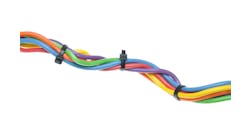For plug flow volumes, the concern is more about the gain being too large. The process time constant is often less than the total loop dead time due to lack of back mixing. The steady state is reached well within the PID time frame. Gas flow reactors in hydrocarbon processing and inline systems in pulp and paper can be considered plug flow. The process response has very little smoothing from the minimal process time constant. The result is nearly step changes in the process variable from step changes in the PID output that are very disruptive to other loops and downstream operations. If the PID gain was tuned aggressively, there would be abrupt changes in the PID output. Lambda tuning rules for self-regulating processes excelled at ensuring a smooth PID output response with no overshoot of the final resting value. The ratio of the closed loop time constant to the open loop time constant (lambda factor) was often much less than one.
Self-regulating processes (e.g. continuous processes) with process time constants much larger than the dead time (near integrating), true integrating processes (e.g. batch processes and level) and runaway processes (e.g. highly exothermic reactions) tend to have an ultimate gain over 100. The exception is gas pressure control with an operating range around atmospheric. For fractional inches of water measurement scales, the measurement gain is so high the ultimate gain is probably no more than 10.
For near integrating processes, a low controller gain results in a very slow approach to setpoint. A closed loop time constant (lambda) less than the open loop time constant meant the time to reach a new setpoint or recover from a load disturbance was hours for vessels and operating shifts for large columns. The closed loop time constant is the time constant for the response to a set point change. In the literature a lambda factor was used that is the ratio of the closed loop to open loop time constant. The dynamics of back mixed volumes allow and demand a lambda factor that is one to two orders of magnitude less than the lambda factor for plug flow processes. Tuning methods based on lambda factor often did not allow a factor low enough for near integrating processes. A better approach is to use lambda rather than lambda factor (current practice). The minimum lambda is the maximum total loop dead time regardless of whether the response is dead time dominant, near integrating, true integrating, or runaway.
As mentioned last week lambda integrating tuning rules are used for near integrating, true integrating, and runaway processes. Here the lambda is an arrest time, which is the time for the process variable to reach its peak and start its return to setpoint for a load disturbance. In slide 92 of the short course I taught on March 7, 2013 for the ISA New Orleans section titled "Effective Use of PID Controllers" the minimum time to the peak error (arrest time) is one loop dead time. This is an easily understandable limit in that a controller cannot see and react to a disturbance until one loop dead time (the time it takes for a change to make one pass around the control loop in the block diagram on slide 87).
Note that I have donated my time to teach courses to help ISA Sections. If you would like me to teach a short course for your section based on any of the books on slide 3 contact me or Susan Colwell at ISA. The only requirements are reimbursement for travel expenses and the section buy the ISA book to support ISA publications.
For true integrating processes, the product of the gain and reset time must be greater than twice the inverse of the integrating process gain as noted on slide 103 to prevent slow rolling oscillations. The oscillations are so slow, the pattern may not be apparent unless the trend recording covers several shifts and disturbances do not disrupt the pattern. Since the maximum controller gain is often more than an order of magnitude lower than permitted, the reset time must be increased by more than an order of magnitude to prevent violation of the criteria. The best thing you can do for an integrating process is to increase the reset time by a factor of ten or even a hundred. The response will be stable even if the reset time was in the ball park before the change. This rule of thumb works for near integrating and especially runaway processes. What I don't know is if a near integrating process will also develop slow rolling oscillations if the product of the gain and reset time is too low. I will be doing tests in the next few weeks to find this out.
A PID gain less than the inverse of the process gain for a runaway process will diverge. These open loop unstable processes get a closed loop self-regulation from proportional action of the PID. If the gain is too low the self-regulation is insufficient.
Many of the difficulties shown on slide 124 for integrating and runaway processes also apply to near integrating processes. To prevent overshoot, proportional action must greater than integral action when the process variable gets within four dead times of reaching the setpoint (SP). Thus, an increase in gain can reduce overshoot. Too much gain can cause a falter in the approach to setpoint. A gain increased to the point of causing oscillations may end up triggering an overshoot. For processes with no steady state in the PID time frame, it is unusual to see a gain large enough to cause an overshoot. Any SP overshoot that exists is probably due to too small of a reset time.
Note that overshoot of the final resting value (FRV) by the PID output is essential for these processes with no steady state in PID time frame. You cannot make an integrating process move and open loop unstable processes can pose a safety concern without overshoot of the FRV. In contrast, overshoot of the FRV is often undesirable for plug flow processes.
Next week we will concentrate on what to do when we deliberately need to reduce the PID gain to absorb process variability.




